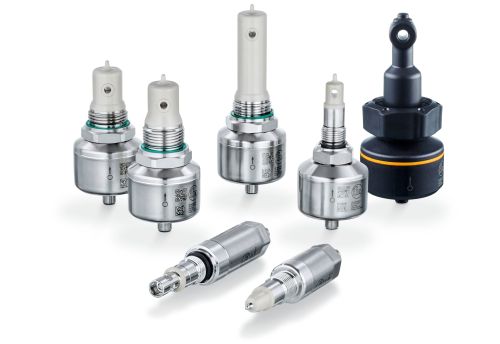- Analytical sensors
- Conductivity sensor LDL
Using conductivity sensors to ensure quality and increase efficiency

The conductivity value indicates how well a material conducts electric current. In the water, food and beverage industries, as well as in other sectors, this value is used as an important measured parameter in quality assurance. It contributes, for example, to the optimisation of CIP processes or to the quality monitoring of ultrapure water. What is more, conductivity can also be used as an indicator for phase separation.
Topics
The compact LDL series combines evaluation unit and measuring element in one housing. This saves space in the control cabinet and significantly reduces wiring complexity. It also eliminates the need for an expensive data cable between the measuring element and the evaluation unit.
The standardised M12 connector convinces with absolute ingress protection while also withstanding the severe conditions in hygienic environments. Moreover, errors when connecting the wires in the terminal chamber are ruled out.
The fully welded stainless steel housing with protection class IP69K and the absence of seals, which can become porous over time, is convincing in hygienic applications. The sensor made of polypropylene, on the other hand, is always suitable when metallic sensors tend to corrode in the application. This may happen with salty ambient air, for example.
The variety of adapters makes it easy to integrate the sensor via retrofit or in new installations. Thanks to the G 1/2" process connection, this already applies to small pipe diameters starting from DN25.
The sensor is ready when you are: simply take the LDL out of the packaging and connect it. The conductivity in the medium is reliably determined right away.
The factory certificate is included with all LDL conductivity sensors. It can be downloaded from our website free of charge with the serial number of the sensor.
System connection
LDL100
The LDL100 is the right choice to identify process phases. The differentiation between media and resulting process phase identification plays a decisive role, especially in the food industry. Cleaning agents, rinsing water and products in the process pipes have different conductivity values and can therefore be easily and reliably detected thanks to the LDL100. This ensures unambiguous tracking at all times.
LDL101
The LDL101 conductivity sensor is the right choice where the purity of water is crucial for product quality or process reliability. The sensor detects the conductivity of water from a value of 0.04 µs/cm. This makes it ideal for applications in water filtration where purified water of all levels is used. Possible applications here are water treatment, parts cleaning and critical supply systems (cooling water).
LDL400
The LDL400 is the ideal choice for applications in which metallic sensors tend to corrode. These can be applications with brine or salty ambient air, for example. With a wide measuring range from 100 to 2,000,000 µS/cm, the sensor is suitable for numerous applications. Among other things, it can be used in almost every stage of water treatment. The sensor also meets the high requirements of the marine industry and is certified according to DNV EU RO Mutual Recognition Type Approval.
Overview of the areas of application
Selection guide: overview of conductivity sensors and their measuring ranges
- No measurement inaccuracies, such as occur with analogue transmission as a result of multiple digital and analogue conversion
- Conductivity and temperature value: two values at one measuring point
• fewer measuring points required
• reduced initial cost - High measurement resolution without scaling
- Quality monitoring with:
• continuous display of the device status
• operating hours histogram
• internal memory for min. and max. conductivity/temperature values - Replacement devices can be detected and automatically configured by the IO-Link master
Did you know?
With a conventional analogue output, a large measuring range is scaled to 4..20 mA. As a result, the smallest changes in conductivity can often not be directly detected. This can lead to residual amounts of chemicals going undetected in rinse water or products, and in the worst case even result in product recalls. With IO-Link, however, the resolution of the conductivity value is always scaled to suit the used measuring range, so that the highest possible accuracy is guaranteed at all times.
Resolution comparison of IO-Link and analogue signals in µS/cm
| Measuring range [µS/cm] |
IO-Link resolution | Analogue PLC input card | |||
|---|---|---|---|---|---|
| LDL100 * | LDL101 | LDL200 | LDL400 | ||
| < 10 | 0.001 | 0.003 | |||
| < 100 | 0.01 | 0.03 | |||
| < 1,000 | 1 | 0.1 | 1 | 1 | 0.3 |
| < 10,000 | 1 | 1 | 1 | 3 | |
| < 100,000 | 10 | 10 | 10 | 25 | |
| < 500,000 | 100 | 100 | 122 | ||
| < 1,000,000 | 100 | 100 | 244 | ||
| < 2,000,000 | 100 | 488 | |||
* LDL100 measuring range is limited to 15,000 µS/cm.